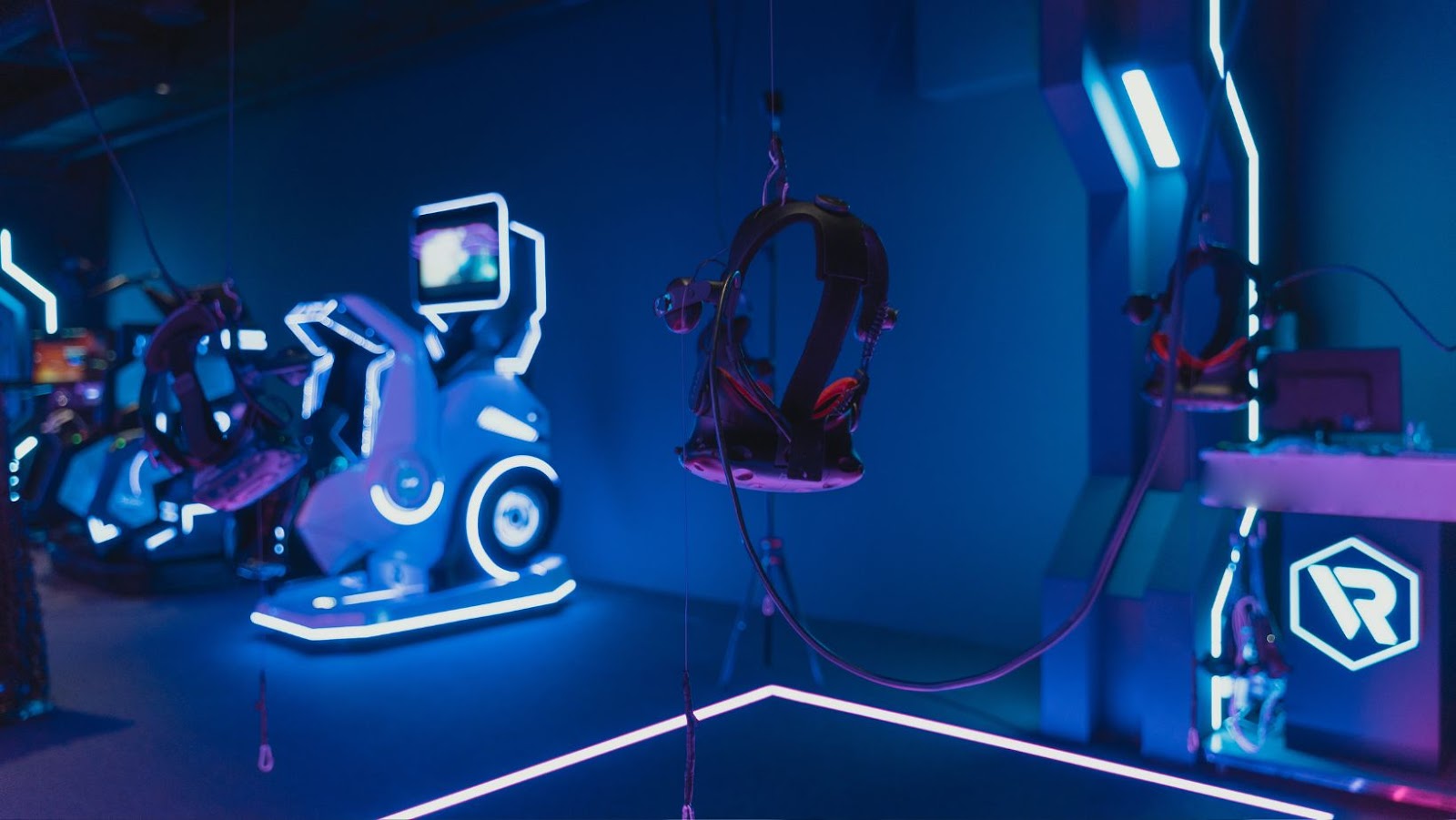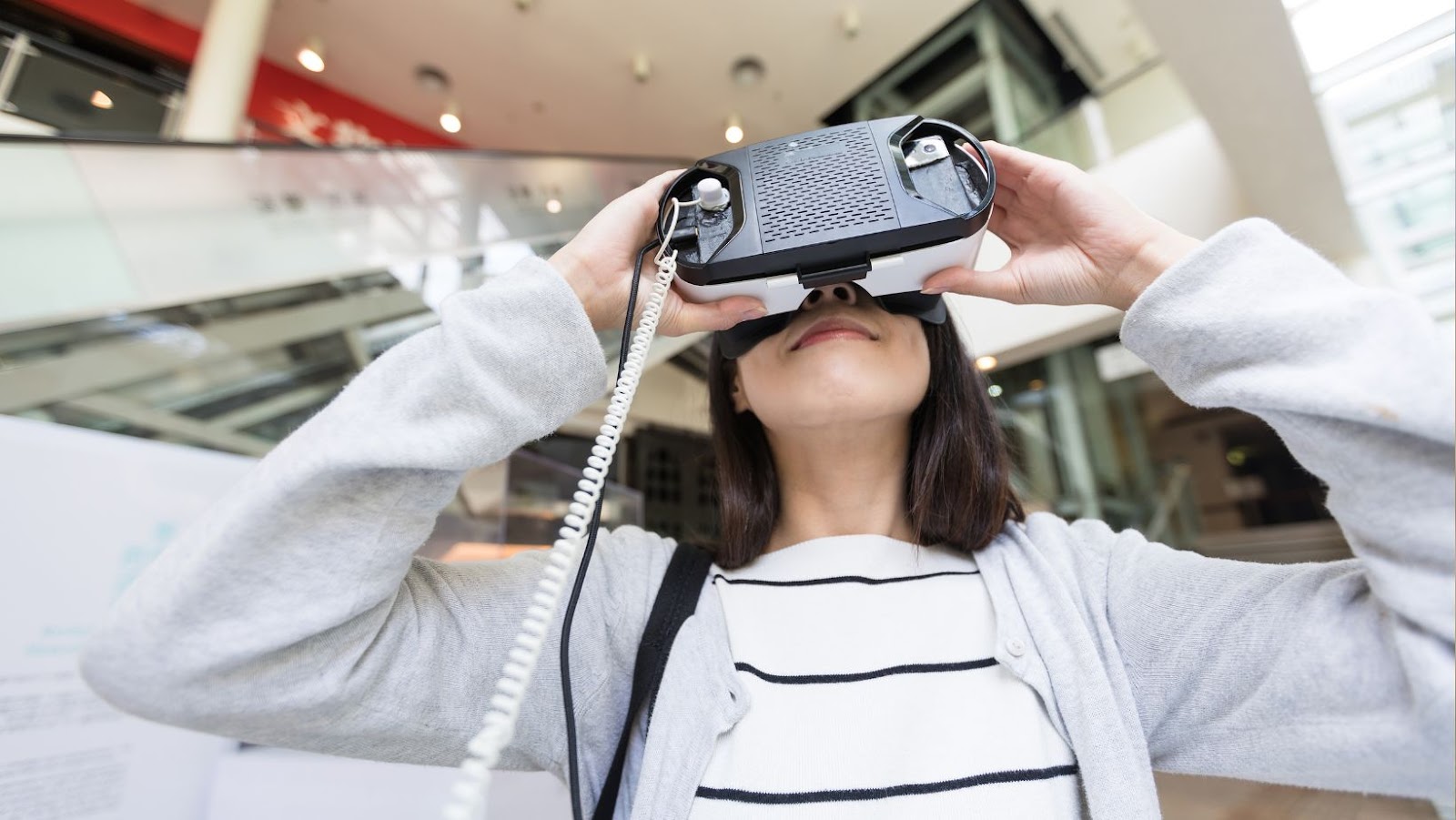 Types of VR Devices
Types of VR Devices
Types of VR Devices, in essence, are hardware gadgets designed to deliver virtual reality experiences. These primarily include Head-Mounted Displays (HMDs), like the Oculus Rift, HTC Vive, and PS VR, which have transformed gaming and simulation exercises. Other components such as handheld controllers and tracking sensors, like Jaron Lanier’s DataGlove, contribute to the full array of VR devices. Together, these devices create a comprehensive system, allowing users to dive headfirst into a digital dimension.
Acting as portals to alternate realities, Types of VR Devices manipulate users’ sensory perceptions based on the laws of physics. Headsets portray virtual landscapes via high-definition screens close to the user’s eyes, creating the perception of depth and spatial presence. Meanwhile, many HMDs employ Stereoscopic Displays, offering unique images for each eye, enhancing the overall depth perception. Controllers and sensors detect and mirror users’ real-world movements into the virtual realm, making user interaction with the virtual environment possible. Internal components like accelerometers, gyroscopes and, in certain instances, magnetometers aid in tracking head and body movements, ensuring a realistic motion representation in the VR world. By intertwining visual, auditory, and haptic feedback, VR devices successfully simulate an immersive environment, seducing the senses into the realm of virtual reality.
 Classification of VR Devices
Classification of VR Devices
Tethered VR devices earn their name due to their requirement for a physical connection, typically a cable, to a high-powered computer to operate effectively. They include high-end products like Oculus Rift, HTC Vive, and PS VR. Recognized for their superior visual and auditory fidelity, these devices integrate motion tracking sensors, hand controllers, and external cameras to ensure an immersive VR experience. However, their dependency on a cable connection can limit the user’s mobility, offering a potentially restricted virtual experience compared to the other types.
With Standalone VR devices, their defining feature is autonomy. Requiring no additional hardware, these devices, including Oculus Quest and Pico Neo, are independent units packing all the necessary components inside the headset itself. They offer freedom of movement to the user, with in-built tracking systems to monitor the user’s position and allow free roaming within the virtual environment. However, Standalone VR devices often come with a high price tag due to their advanced technology, and their computational power may already be lower than tethered VR devices.
Mobile VR devices represent the most accessible type of VR technology. These devices, such as Samsung Gear VR and Google Daydream, utilize smartphones as their main hardware source. Users imprint their phones into these VR devices, which relay VR content directly from apps or games. Simply put, these devices transform the mobile screen into a VR environment. Given their affordability and ease of use, Mobile VR devices are a popular choice among VR first-timers. However, their immersive quality and computational power are markedly lower than standalone and tethered devices.
 Analyzing Key Features of Type of VR Devices
Analyzing Key Features of Type of VR Devices
In a world filled with constant tech innovations, Types of VR Devices make no exception. Amid Tethered, Standalone, and Mobile VR devices, key features play a substantial role in differentiating these devices. These features often dictate the user choice based on specific requirements.
Tethered VR devices, such as Oculus Rift and HTC Vive, exemplify their dominance through exceptional spatial tracking. Superior image quality, precise motion tracking, and high-end graphics underpin their functioning. In spatial terms, they rely on external sensors placed in the room, creating an interactive 3D environment around the user. Thus, enhancing the level of immersion and interaction within virtual reality.
Standalone VR devices, like Oculus Quest, have made strides in offering immersive experiences. These experiences arise from a powerful blend of autonomy and built-in motion tracking. Their autonomy emerges from having all necessary components confined within the headset, negating the need for any external connections. Built-in motion tracking, on the other hand, enables user movements to be mirrored in the virtual environment, heightening the sense of reality.
Mobile VR devices, like Samsung Gear VR, bring VR experiences within everyone’s reach. Their key feature lies in portability and affordability, making them a go-to solution for VR enthusiasts on a budget. This is made possible by leveraging smartphones to deliver the VR experience – a feature that allows them to be lightweight and affordable. Furthermore, they are user-friendly and can be used practically anywhere, contributing to their popularity among a wider audience.